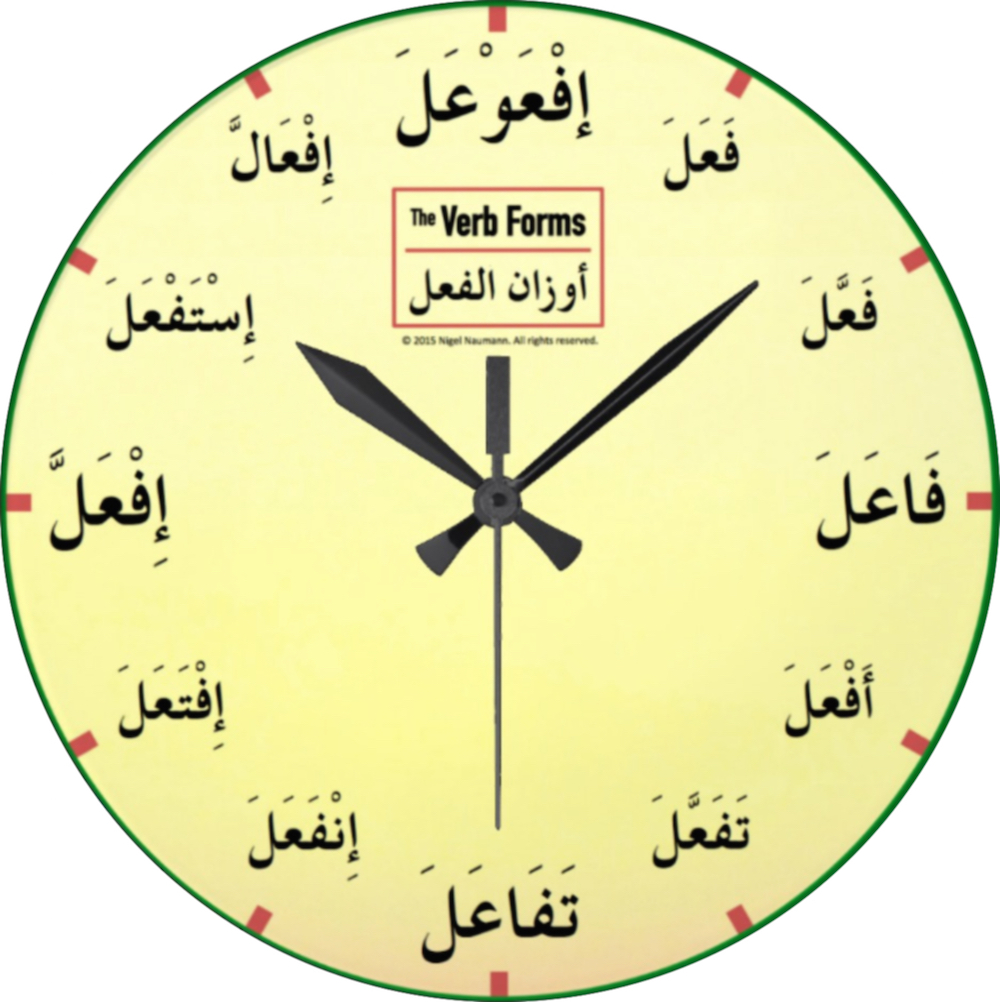Arabic verbs are noted for an unusual system of derivation. From any particular root various verb stems may be formed. Western scholars usually refer to these derivations as “form I”, “form II”, … up through “form XV,” though these designations are not used indigenously, where they are referred to by derivations of the verb فعل (“to do”). Accordingly, form I would be فَعَلَ (faʿala), form II would be فَعّلَ (faʿʿala), etc. These forms refer to triliteral roots (those made of three consonants). There are also quadriliteral roots, made up of four consonants, which come in four forms, “form Iq”, “form IIq”, “form IIIq” and “form IVq”. Triliteral forms XI through XV and quadriliteral forms IIIq and IVq are rare and tend to be intransitive, often stative, verbs (having the meaning “to be or become X” where X is an adjective).
These forms and their associated participles and verbal nouns are the primary means of forming vocabulary in Arabic. All of the examples shown here are the citation forms, which in Arabic means the 3rd-person masculine singular perfect (e.g., “he did”, “he wrote”).
Form IX
Perfective اِفْعَلَّ (ifʿálla), imperfective يَفْعَلُّ (yafʿallu)
This stem is formed by dropping the vowel of the first radical, adding liaison (ا) as necessary, and doubling the final radical. This form is used by only a small number of verbs denoting color or bodily defect.
احمر (iḥmárra) — to turn red, to blush.
اصفر (iṣfárra) — to turn yellow, to pale.
ابيض (ibyáḍḍa) — to turn white.
ازرق (izráqqa) — to turn blue.

